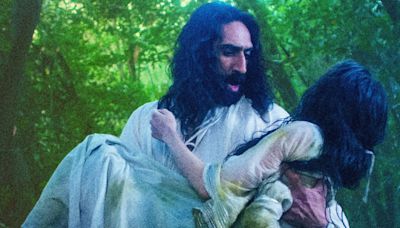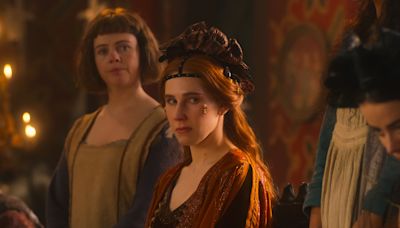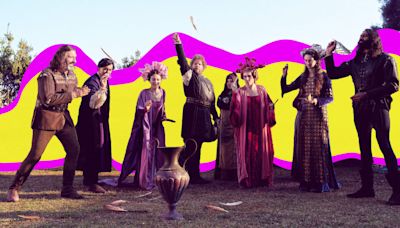Search results
The Decameron (/ d ɪ ˈ k æ m ər ə n /; Italian: Decameron [deˈkaːmeron, dekameˈrɔn,-ˈron] or Decamerone [dekameˈroːne]), subtitled Prince Galehaut (Old Italian: Prencipe Galeotto [ˈprentʃipe ɡaleˈɔtto, ˈprɛn-]) and sometimes nicknamed l'Umana commedia ("the Human comedy", as it was Boccaccio that dubbed Dante Alighieri's ...
3 days ago · The Decameron is a collection of tales by Giovanni Boccaccio, probably composed between 1349 and 1353. The work is regarded as a masterpiece of classical Italian prose. It comprises a group of stories united by a frame story.
A short summary of Giovanni Boccaccio's The Decameron. This free synopsis covers all the crucial plot points of The Decameron.
Aug 11, 2020 · Written between 1348 and 1353, the Decameron is a prescription for psychological survival, a way of mentally distancing from today’s death counts and grim economic forecasts.
3 days ago · The tone is cheeky; the soundtrack flips between Vivaldi and New Order. On one level, “The Decameron” resembles a more acerbic version of twisted-history comedies like “Dickinson” and ...
2 days ago · For sheer eye-popping smut The Decameron, written in Italian by Giovanni Boccaccio in the early 1350s, leaves its rivals in the shade. It has even left its mark on the Italian language, where the ...
The Decameron itself shows a humanist spirit by investing all sorts of human affairs—from romantic affairs and royal weddings to trade deals and customs-houses to sexual liaisons and ingenious trickery—with importance.
3 days ago · Giovanni Boccaccio - Italian Poet, Decameron, Renaissance: It was probably in the years 1348–53 that Boccaccio composed the Decameron in the form in which it is read today. In the broad sweep of its range and its alternately tragic and comic views of life, it is rightly regarded as his masterpiece.
The Decameron by Giovanni Boccaccio is a masterpiece of world literature and the source of much of our popular culture. The book has one hundred plots with hundreds of characters, narrated by ten storytellers, plus ten songs that are exquisite examples of romantic poetry.
The Decameron Summary. Next. Prologue. In 1348, the Bubonic Plague ravages the city of Florence, turning society upside down. During these dark days, seven young women— Pampinea, Fiammetta, Filomena, Emilia, Lauretta, Neifile, and Elissa —run into each other at the church of Santa Maria Novella. Pampinea suggests they temporarily flee the ...





